To install a sliding door lock, first, measure the width of the door frame. Then, mark the desired height for the lock on the frame using a pencil.
Benefits Of Installing A Sliding Door Lock
Enhancing the security of your home or office is a top priority for any responsible homeowner or business owner. One effective and reliable way to achieve this is by installing a sliding door lock. A sliding door lock not only offers enhanced security but also provides protection against potential break-ins and burglaries. By investing in a sliding door lock, you can enjoy increased peace of mind, knowing that your loved ones, valuable possessions, and confidential information are well-protected. Let’s explore the benefits of installing a sliding door lock in more detail.
Enhanced security for your home or office
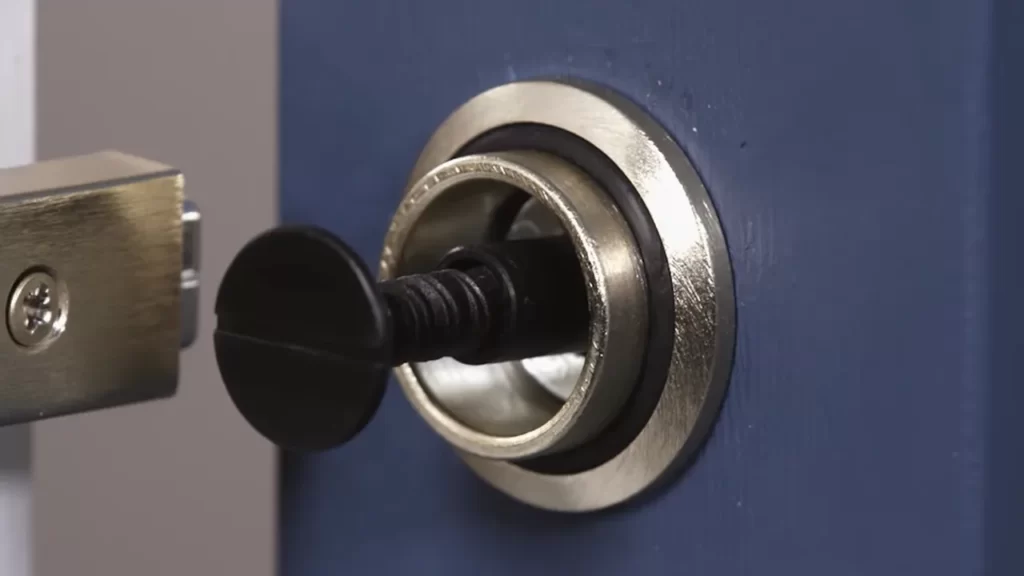
A sliding door lock offers an additional layer of security to your home or office, providing the much-needed peace of mind. Intruders often target sliding doors as they can be more vulnerable than traditional doors. However, by installing a high-quality sliding door lock, you can reinforce the security of your property. These locks are designed to prevent unauthorized access, making it significantly more challenging for intruders to break-in.
With a sliding door lock in place, you can enjoy enhanced security knowing that you have taken proactive measures to protect your property. The robust construction and advanced locking mechanisms of these locks provide a solid deterrent against potential break-ins, giving you valuable time to alert authorities or authorities swiftly.
Protection against break-ins and burglaries
Sliding doors are often targeted by burglars due to their accessibility and potential vulnerabilities. Investing in a reliable sliding door lock can significantly reduce the risk of break-ins and burglaries. These locks offer advanced features such as anti-pick pins, anti-drill plates, and reinforced strike plates, making it extremely difficult for intruders to bypass the lock.
By installing a sliding door lock, you create a formidable barrier that acts as a deterrent against potential burglars. The additional security measures provided by these locks can prove invaluable in preventing unauthorized entry into your home or office, protecting your loved ones, and safeguarding your valuable possessions.
Increased peace of mind, ensuring
Installing a sliding door lock brings about a sense of increased peace of mind. Knowing that you have taken the necessary steps to secure your property and those inside it can significantly reduce your stress and worry. With a sliding door lock, you can rest assured that your home or office is well-protected, even when you are away.
This increased peace of mind extends beyond keeping burglars at bay. A sliding door lock also keeps your loved ones safe from potential harm. Whether it’s your children playing in the backyard, elderly family members, or pets, a secure sliding door offers you the confidence that they are protected from external threats.
The installation of a sliding door lock not only enhances the security of your property but also ensures your peace of mind, allowing you to go about your daily life without unnecessary anxiety.
Step 1: Gather The Tools And Materials
Before you can start installing a sliding door lock, it is important to gather all the necessary tools and materials. Having everything on hand will make the process much smoother and ensure that you can complete the installation without any delays. Here is a breakdown of the tools and materials you will need:
List of tools needed for the installation process
Below is a list of tools that you will need to install a sliding door lock:
- Drill: A power drill will be needed for creating holes and installing the lock mechanism.
- Screwdriver: You will need both a flathead and a Phillips-head screwdriver to tighten screws and secure the lock.
- Measuring tape: This tool will help you accurately measure the dimensions required for the lock installation.
- Chisel: A chisel is necessary for creating recesses or mortises for the lock components to fit into.
- Pencil: You’ll need a pencil for marking the areas where you will be drilling holes and making cuts.
- Masking tape: Masking tape can be used to mark the drill points and prevent any damage to the surface of the door.
- Safety goggles: Protect your eyes while using tools or drilling into the door by wearing safety goggles.
Overview of the materials required
Here is a brief overview of the materials you will need for installing the sliding door lock:
| Materials | Description |
|---|---|
| Sliding door lock kit | A lock kit specifically designed for sliding doors, containing the necessary components for installation. |
| Screws | Various screws of appropriate sizes and lengths, depending on the lock kit and type of door. |
| Strike plate | A metal plate that attaches to the door frame to receive the lock bolt and keep the door securely closed. |
| Latch or deadbolt | The key component of the lock that extends or retracts when the door is locked or unlocked. |
| Template | A template provided in the lock kit that helps you accurately mark the mounting points for drilling. |
| Wood filler | Used to fill any holes or gaps that may have been created during the installation process. |
With your tools and materials gathered, you are now ready to move on to step 2 of the installation process, which involves preparing the door for installation. Be sure to read the next section to learn how to properly prepare your sliding door before installing the lock.
Step 2: Prepare The Sliding Door
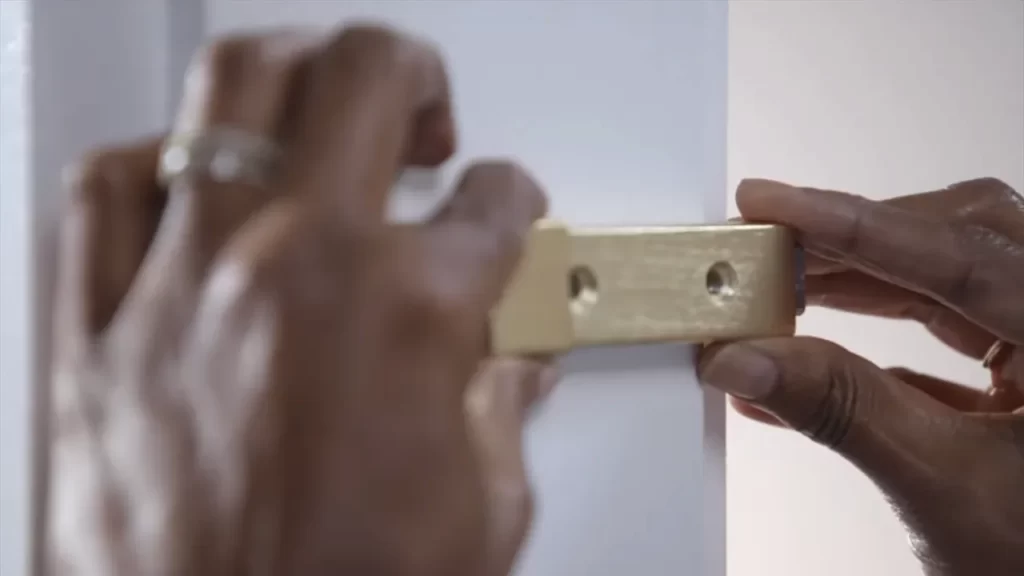
Before installing a sliding door lock, it’s important to prepare the door to ensure proper functionality and a secure fit. This step includes assessing the condition and type of sliding door, cleaning and removing any obstructions or debris, and ensuring smooth sliding functionality.
Assess the condition and type of sliding door
Begin by assessing the condition and type of your sliding door. This will help determine the appropriate lock and installation method. Take note of any damage or wear on the door, as well as the material it is made of.
If you have a wooden sliding door, you may need a different type of lock compared to a glass or aluminum door. Additionally, check if your door has any existing locking mechanism or hardware that needs to be replaced.
Clean and remove any obstructions or debris
Next, thoroughly clean your sliding door to ensure a smooth installation and operation of the lock. Remove any obstructions or debris that might hinder the lock’s proper functioning. This can include dirt, dust, or even old adhesive residue from previous hardware.
Use a mild detergent and warm water solution to clean the door surface, and gently scrub away any stubborn grime. Ensure that the door is completely dry before moving on to the next step.
Ensure smooth sliding functionality
The final step in preparing the sliding door is to check its sliding functionality. A smooth-sliding door is crucial for the lock to work effectively and ensure the safety of your property.
Carefully slide the door along the track and check for any resistance or sticking points. If you encounter any issues, such as the door getting stuck or difficult to move, investigate the cause and address it before proceeding.
This may involve lubricating the track or adjusting the rollers or guides. Remember, a well-maintained sliding door will not only make the installation process easier but also improve the overall security of your home or office.
Step 3: Measure And Mark
Now that you have prepared the sliding door and gathered the necessary tools and materials, it is time to move on to the next important step: measure and mark the required positions for the lock components. This step is crucial as it ensures accurate installation of the sliding door lock and guarantees optimal security for your home. Let’s dive into the details of how to accurately measure and mark the dimensions for the lock placement.
Accurately measure the dimensions for the lock placement
The first order of business is to measure the dimensions of the sliding door frame where the lock components will be installed. You’ll need a measuring tape for this task. Start by measuring the width and height of the door frame, taking note of the measurements in inches or centimeters, whichever unit you prefer. Make sure to measure the frame precisely, ensuring accuracy in your calculations. To ensure that the sliding door lock is installed at the right height, measure from the bottom of the door frame. This will ensure that the lock is easily accessible but still provides security. Repeat this measurement on both the left and right sides of the door frame, ensuring symmetry and balance.
Mark the required positions for the lock components
Once you have the accurate measurements, it’s time to mark the positions where the lock components will be installed. To do this, you can use a pencil or a marker. Begin by marking the center of the door frame vertically with a small, light mark. This will serve as a reference point for the lock installation. Using the measurements you took earlier, mark the positions for the strike plate on the door jamb. Typically, it is placed about an inch above the bottom of the door frame. Mark the positions for the lock mechanism and any additional components according to the manufacturer’s instructions, ensuring precise placement.
Summary
In conclusion, accurately measuring and marking the dimensions for the lock placement is an essential part of installing a sliding door lock. By following these steps, you can ensure that the lock is installed correctly, providing optimal security and peace of mind for your home. Don’t rush this step; take your time to measure accurately and mark the required positions precisely. With attention to detail and a steady hand, you’ll have your sliding door lock installed in no time!
Step 4: Install The Lock Body
Now that you have prepared the door and inserted the lock cylinder into the hole, it’s time to install the lock body. This step will ensure that your sliding door is securely locked and provides the necessary protection for your home or office. Follow these simple instructions to correctly install the lock body.
Insert the lock body into the door edge
Firstly, prepare the lock body by removing any packaging or protective covers. Identify the correct orientation of the lock body by checking for any markings or indicators. Insert the lock body into the pre-drilled hole on the edge of the door where the lock mechanism will be located. Ensure that it fits snugly into the hole without any wobbling or misalignment. A properly fitted lock body will ensure the effectiveness of your sliding door lock.
Secure the lock body with screws
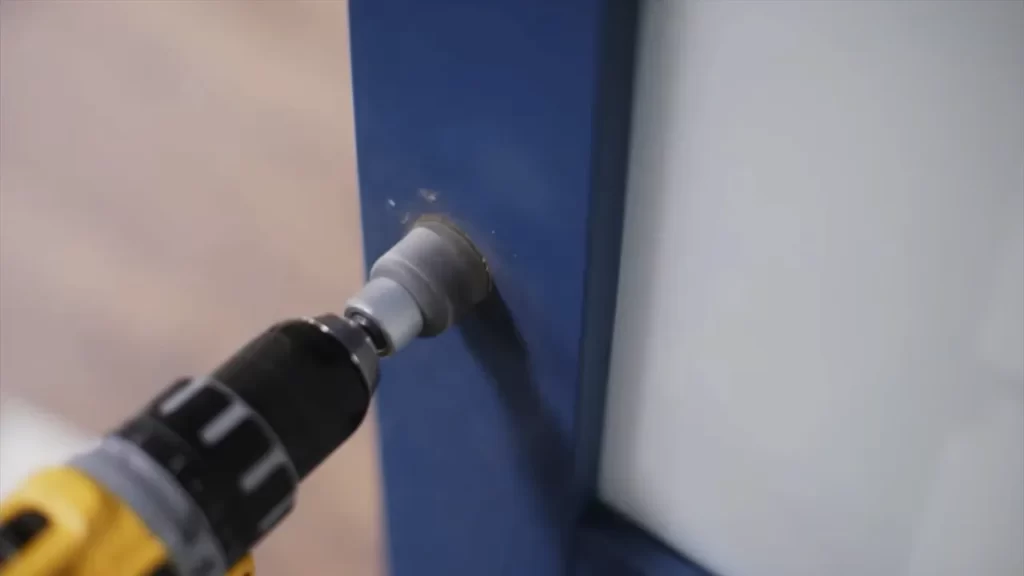
Next, secure the lock body in place using the provided screws. Carefully align the screw holes on the lock body with the corresponding holes on the door edge. Insert the screws into the holes and use a screwdriver to tighten them securely. Make sure the lock body is firmly attached to the door and does not move when pressure is applied. This will prevent any unwanted tampering or forced entry attempts.
Test the lock to ensure smooth operation
Once the lock body is securely installed, it’s crucial to test its functionality. Check that the lock engages and disengages smoothly without any resistance. Test the sliding door to ensure it opens and closes properly while the lock is engaged. This will guarantee that your lock will effectively secure your sliding door and provide ease of use for everyday access.
Congratulations! You have successfully installed the lock body of your sliding door lock. This step brings you one step closer to enhancing the security of your home or office. Continue on to the next step to complete the installation process.
Step 5: Install The Strike Plate
Now that you have successfully positioned and marked the location for the strike plate, it’s time to move on to the next crucial step – installing the strike plate. This step is essential as it ensures that your sliding door lock is properly aligned and securely attached to the door frame.
Position and mark the location for the strike plate
To begin, make sure you have the strike plate in hand. Take note of the orientation of the door and determine the exact spot where the strike plate should be positioned on the door frame. Usually, the strike plate is installed on the side of the frame opposite the direction in which the door slides. Once you have identified the spot, mark it with a pencil or marker for easy reference.
Attach the strike plate to the door frame with screws
Now that the location is marked, it’s time to attach the strike plate to the door frame. Ensure that the strike plate is aligned with the marking you made earlier. Take out the screws provided with the lock kit and insert them into the pre-drilled holes on the strike plate. Use a screwdriver or power drill to tighten the screws until the plate is securely fastened to the frame. Make sure the strike plate sits flush against the frame to ensure maximum effectiveness.
Test the lock to ensure proper alignment with the strike plate
Before considering the installation complete, it’s crucial to test the lock to ensure it aligns correctly with the strike plate. Slide the door closed and engage the lock mechanism. Verify that the locking bolt lines up perfectly with the hole in the strike plate and that it smoothly enters the hole and secures the door shut. If the alignment is off or the bolt doesn’t insert smoothly, you may need to adjust the position of the strike plate slightly. Make any necessary adjustments until the lock aligns perfectly with the strike plate.
Once you have completed these steps, congratulations! You have successfully installed the strike plate for your sliding door lock. This now completes the installation process, and you can enjoy the added security and peace of mind that comes with a properly functioning sliding door lock.
Step 6: Install The Lock Cylinder And Thumb Turn
Congratulations! You’re almost there in securing your sliding door with a lock. In this step, we will guide you through the process of installing the lock cylinder and thumb turn, the final components that will enable you to lock and unlock your sliding door with ease. To get started, follow these simple steps:
1. Insert the lock cylinder into the lock body
Take the lock cylinder and carefully insert it into the designated slot in the lock body. Ensure that the keyhole is facing towards the exterior of the door, allowing easy access from the outside. It is crucial to align the lock cylinder properly with the lock body to ensure smooth operation.
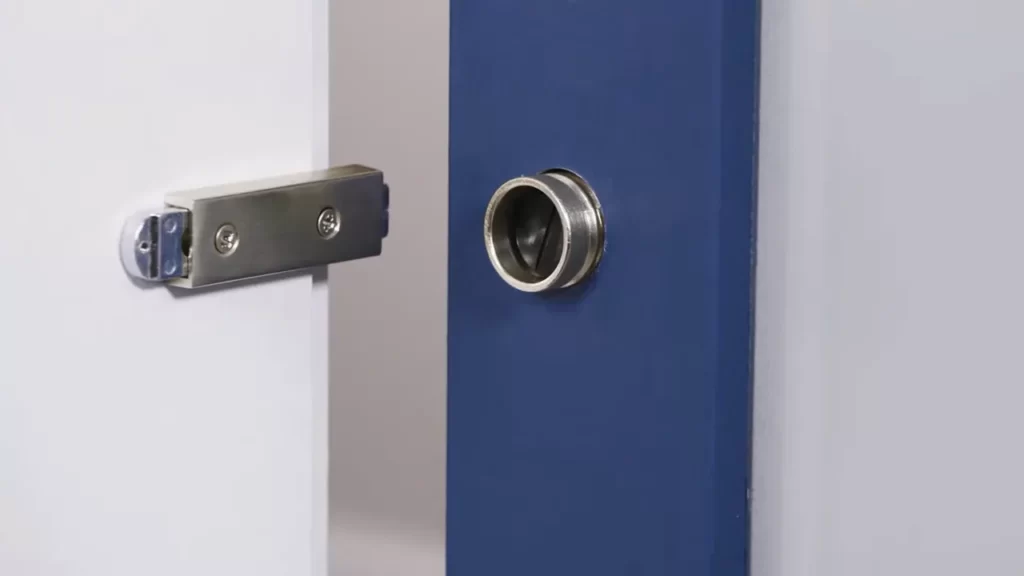
2. Attach the thumb turn to the lock cylinder
Now, it’s time to attach the thumb turn to the lock cylinder. The thumb turn is the part of the lock that allows you to lock and unlock the door without the need for a key. Simply insert the spindle of the thumb turn into the designated hole on the lock cylinder and secure it tightly.
3. Verify the smooth functioning of the lock
Once you have successfully attached the thumb turn, it’s essential to verify the smooth functioning of the lock. Test the lock by turning the thumb turn to lock and unlock the sliding door. Ensure that the lock engages and disengages smoothly without any resistance or difficulties. If you encounter any issues, double-check the alignment of the lock cylinder and thumb turn, and make any necessary adjustments. By following these steps, you have successfully installed the lock cylinder and thumb turn for your sliding door lock. Now, you can enjoy the peace of mind that comes with knowing your sliding door is secure and protected. Remember, regular maintenance and periodic checks are essential to ensure the continued smooth operation of your sliding door lock. If you have any questions or need further assistance, feel free to reach out to a professional locksmith or refer to the manufacturer’s instructions. Happy locking!
Step 7: Test The Lock
Once you have installed the sliding door lock, it’s crucial to test its functionality to ensure it is working properly. This step will help you evaluate the lock’s performance and make any necessary adjustments for optimal security.
Lock and unlock the sliding door multiple times
Start by locking and unlocking the sliding door multiple times using the newly installed lock. This will allow you to gauge how smoothly the lock operates and check if it securely holds the door in place when locked. Make sure to pay attention to any unusual sounds or resistance that could indicate a problem.
Check for any resistance or difficulties in operation
While testing the lock, be mindful of any resistance or difficulties you encounter. Your goal is to ensure that the sliding door locks and unlocks seamlessly without any hitches or obstructions. If you notice any issues, such as the lock being too tight or loose, or if the door doesn’t slide smoothly, it may require some adjustments.
Adjust the lock components if necessary
If you encounter any problems during the testing phase, you may need to adjust the lock components. This could involve tightening or loosening screws, realigning the latch or strike plate, or lubricating the lock mechanism. Keep in mind that each sliding door lock may have its own specific adjustment requirements, so refer to the manufacturer’s instructions for guidance.
By thoroughly testing the lock and addressing any issues promptly, you can ensure that your sliding door lock provides maximum security and peace of mind. Remember, a properly functioning lock not only keeps unwanted intruders out but also enhances the overall safety of your premises.
Maintenance Tips For Sliding Door Locks
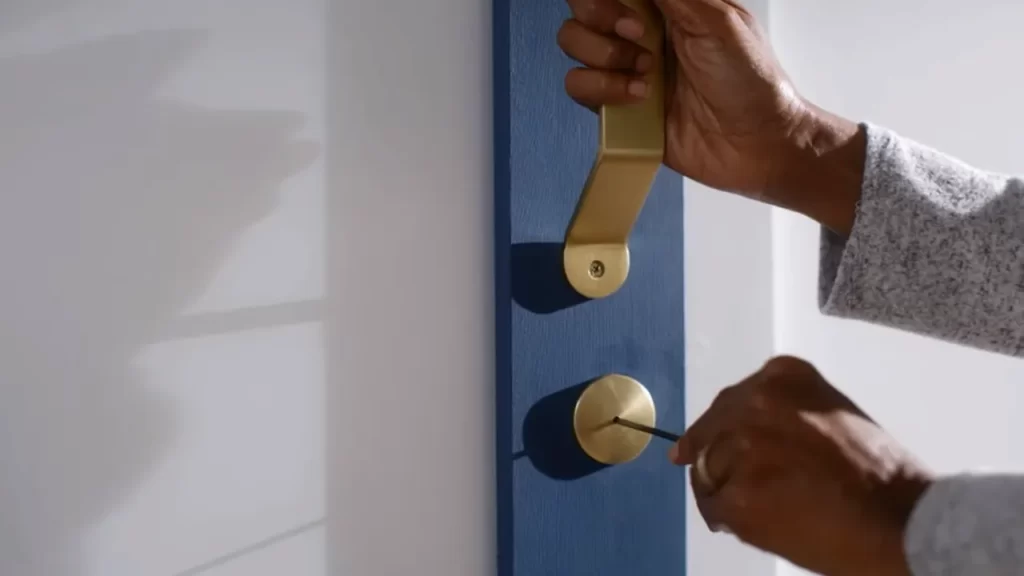
Regularly clean and lubricate the lock mechanism
The key to ensuring smooth operation and longevity of your sliding door lock is regular cleaning and lubrication. Over time, dirt, dust, and debris can accumulate inside the lock mechanism, causing it to become stiff or difficult to operate. By incorporating a simple cleaning and lubrication routine into your regular maintenance schedule, you can keep your sliding door lock in optimal condition.
Start by cleaning the exterior of the lock with a damp cloth to remove any dirt or grime. Be sure to also clean the keyhole and surrounding areas. Use a soft-bristle brush to gently scrub away any stubborn residue. Once the lock is clean, apply a small amount of graphite or silicone spray lubricant to the keyhole, latch, and other moving parts of the lock mechanism. This will help reduce friction and ensure smooth operation.
Inspect the lock for any signs of damage or wear
A thorough inspection of your sliding door lock is essential in maintaining its security and functionality. Regularly check for any signs of damage or wear that may compromise the lock’s effectiveness. Look for any cracks, dents, or rust on the lock housing or strike plate.
If you notice any loose or worn-out parts, such as screws or springs, tighten or replace them promptly. This will help prevent further damage and ensure that your lock continues to provide the level of security you need. Additionally, check the alignment of the lock with the strike plate. If they are not properly aligned, it may be time to readjust or replace the strike plate to ensure a secure fit.
Consider upgrading to a higher security lock system
When it comes to the security of your home or property, it is worth considering upgrading to a higher security lock system for your sliding doors. Traditional sliding door locks are often susceptible to break-ins or tampering and may not provide the level of protection required in today’s world.
Fortunately, there are a variety of modern lock systems available that offer enhanced security features. These include keyless entry options, multi-point locking mechanisms, and smart lock technology. Investing in a high-security lock system can provide you with peace of mind knowing that your sliding doors are well-equipped to deter potential intruders.
Consult with a professional locksmith to determine the best lock system for your specific needs and budget. They can guide you through the available options and ensure that your sliding door lock upgrade is installed correctly and effectively.
Frequently Asked Questions On How To Install Sliding Door Lock
How Do You Install A Slide Lock On A Door?
To install a slide lock on a door, follow these steps: 1. Measure and mark the desired height for the lock on the door. 2. Drill holes at the marked spots to accommodate the lock and latch. 3. Insert the lock and latch into the holes and secure them with screws.
4. Test the lock to ensure it slides smoothly and securely. 5. Adjust if necessary and you’re done! Remember to prioritize safety and follow manufacturer instructions for specific locks.
Can I Add A Lock To My Sliding Glass Door?
Yes, you can add a lock to your sliding glass door. It provides additional security for your home.
What Kind Of Lock Can I Put On A Sliding Door?
For a sliding door, you can use a sliding door lock with a sturdy latch that fits into the door frame. It provides added security and prevents the door from being easily opened. Make sure to choose a lock specifically designed for sliding doors.
How Do You Install A Sliding Door Lock Bar?
To install a sliding door lock bar: 1. Measure the width of your door to ensure a proper fit. 2. Position the lock bar on the inside track of the sliding door. 3. Extend the bar to secure it between the door and the frame.
4. Adjust the bar to ensure a snug fit. 5. Test the lock bar to ensure it is securely in place.
How Do I Choose The Right Sliding Door Lock?
To choose the right sliding door lock, consider the material, type of lock, security features, and compatibility with your door.
What Are The Different Types Of Sliding Door Locks Available?
There are various types of sliding door locks including pin locks, cylinder locks, mortise locks, and foot-operated locks.
Conclusion
Installing a sliding door lock is a simple and effective way to enhance the security of your home. By following the step-by-step guide provided in this blog post, you can easily install a sliding door lock yourself. Remember to choose a high-quality lock and follow the manufacturer’s instructions for proper installation.
With a properly installed sliding door lock, you can have peace of mind knowing that your home is secure. So, don’t delay, install a sliding door lock today!
